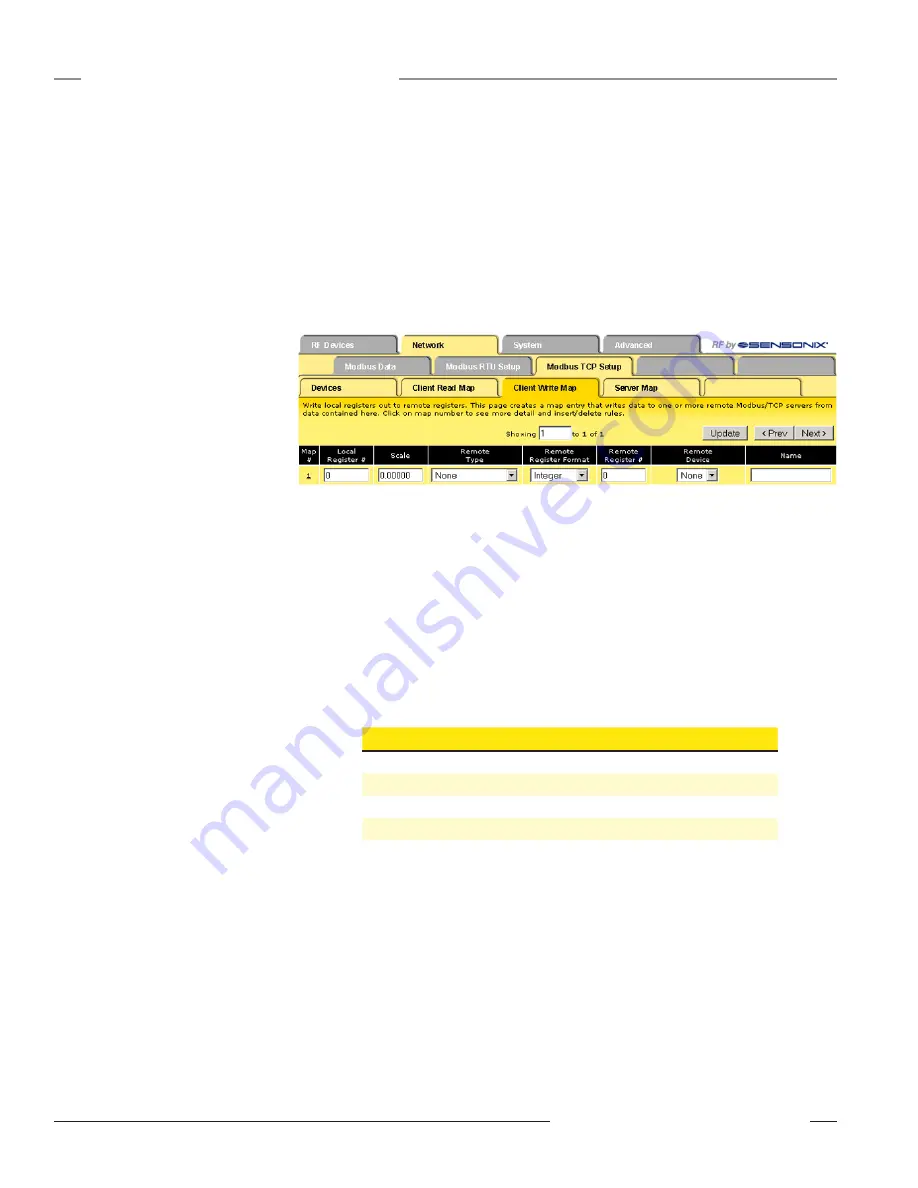
8
P/N 134421
Banner Engineering Corp. • Minneapolis, MN U.S.A.
www.bannerengineering.com • Tel: 763.544.3164
SureCross™ DX80 Web Configurator
Instruction Manual
Network Tab
Client Write Map
The
Client Write Map
page creates a map entry that writes data from a local register to a remote
Modbus/TCP server. Maps on the
Client Write Map
page only write data from the local register to
the remote register listed. Use the
Client Read Map
page to read data from those devices.
Any parameters shown may be changed and submitted by clicking the Update button, but this
screen displays only an abbreviated list of the map parameters. To view and/or modify the complete
set of parameters, click on the hyperlinked map number in the left column and use the expanded
Client Write Map
page.
Data from the local register is multiplied by the scale factor, then written to the remote register. For
each remote register, enter the register type, format, number, and location (device).
Local Register: The data in the local register is multiplied by the scale factor, then written to the
remote register.
Name: The name is optional and used only for display purposes. Names are defined on the
Devices
page, local name field.
Remote Register Format: Select the format of the remote register from integer, unsigned, double,
float, or bit. An integer is a 16-bit (signed) number, an unsigned format is a 16-bit unsigned number,
a double refers to a double precision (32-bit) value, a floating value is a floating point number, and a
bit value is a single bit that can either be a 0 or a 1 (discrete value.)
Remote Register Number: The Remote Register entry is the register number being written to in
the mapping.
Remote Type: Select a Remote Type from the following drop-down list: none, coil (output), discrete
input, input register, or holding register.
Remote Type
Description
Coil (output)
1xxxx - Other slave devices, write only, 1 bit
Discrete Input
3xxxx - Other slave devices, read only, 1 bit
Input Register
3xxxx - SureCross™ slave devices, read only, 16 bit
Holding Register
4xxxx - SureCross slave devices, read/write, 16 bit
Banner Engineering’s SureCross™ slave devices use only input registers and holding registers.
When using slave devices from other manufacturers, please refer to the manufacturer’s
documentation to determine what I/O types are used.
Selecting
None
for remote type negates the rule, though it remains in the list until deleted. To
prevent unused rules from displaying, reduce the number of maps enabled on the expanded view.
Remote Device: The local names from the
Devices
tab are listed in this drop-down list.
Scale: The raw data in the local register is multiplied by the scale factor to produce the data
appearing in the floating point register associated with the I/O point.
Other Commands
Prev and Next buttons: Scrolls through the maps/rules.
Update button: Sends new data or settings to the Ethernet Bridge or Gateway Pro.
















































